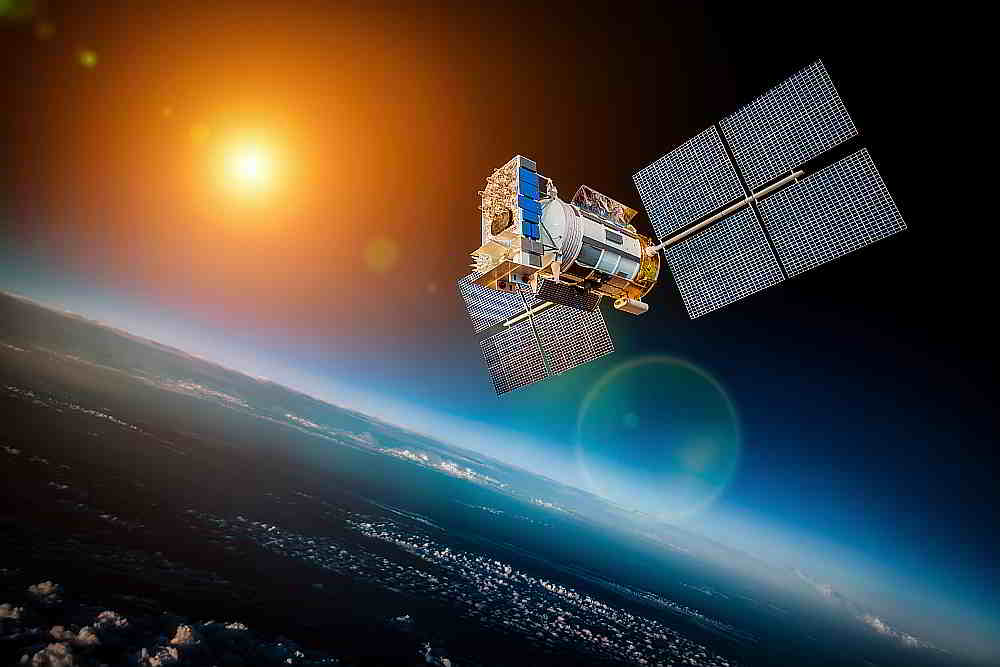Amazon Web Services has formally announced its entry into the space segment. This was expected since AWS was already providing services to space agencies. AWS Ground Station is already being used by NASA’s Jet Propulsion Lab (JPL) and many other customers. Amazon also owns Blue Origin, a private space enterprise. Here is a blog written by Teresa Carlson, Vice President of Worldwide Public Sector, Amazon Web Services.
By Teresa Carlson, Vice President of Worldwide Public Sector, Amazon Web Services
The world is entering an exciting and daring new age in space. New companies have moved into the space business and are launching more satellites and human missions into orbit than ever before. NASA continues to invest in developing a sustainable commercial space economy through Project Artemis. Low-latency internet, high-resolution Earth observation, and a ubiquitous Internet of Things communications companies will launch thousands of new satellites over the next five years to provide sensing capabilities to customers around the world. The space landscape has dramatically shifted over the past 10 years, and this has created an enormous need for new types of innovation for space-based missions.
Amazon Web Services (AWS) has significant experience supporting commercial and government customers that design satellites and conduct spaceflight operations. AWS’s reliable global infrastructure and an unmatched portfolio of cloud services help organizations process and transform massive collections of data from space, and then quickly analyze the data to make it actionable, redefining how we research, make decisions, and see our world.
Today, we’re excited to announce that AWS is introducing a new business segment dedicated to accelerating innovation in the global aerospace and satellite industry. The Aerospace and Satellite Solutions business segment will bring AWS services and solutions to the space enterprise, and work with customers and partners around the world to:
- Reimagine space system architectures.
- Transform space enterprises.
- Launch new services that process space data on Earth and in orbit.
- Provide secure, flexible, scalable, and cost-efficient cloud solutions to support government missions and companies advancing space around the world.
Whether on Earth or in space, AWS is committed to understanding our customers’ missions. As we enter new areas of exploration, leadership, and knowledge are key. That’s why we are excited to welcome Retired Air Force Major General Clint Crosier, former director of Space Force Planning at the U.S. Space Force, as the leader of this new business segment. Maj. Gen. Crosier has spent the last 33 years driving transformation and mission success across the space enterprise and led the Defense Department’s efforts to stand up the U.S.’s newest military service.
“We find ourselves in the most exciting time in space since the Apollo missions,” said Maj. Gen. Crosier. “I have watched AWS transform the IT industry over the last 10 years and be instrumental in so many space milestones. I am honored to join AWS to continue to transform the industry and propel the space enterprise forward.”
As the world’s most comprehensive cloud platform, AWS is uniquely positioned to help make the flow of space data more accessible, more cost-effective, and more actionable. AWS Ground Station, a fully managed service that provides satellite owners and operators global access to their space workloads, offers a hint of what these innovative solutions can look like. Enabling customers to downlink data and provide satellite commands across multiple regions with speed and agility—and at a low cost—means satellite operators don’t have to own and manage duplicative ground station infrastructure. AWS Ground Station is already being used by NASA’s Jet Propulsion Lab (JPL) and many other customers.
Today, customers around the world use AWS services and solutions such as data lakes and storage, edge computing, virtual mission operations, resilient, robust and secure satellite connectivity, image processing and intelligence analytics, and artificial intelligence and machine learning, to drive innovation in space-based missions. AWS solutions help the space enterprise redefine what is possible, and we are excited to continue building and inventing on customers’ behalf.
“With a background in cloud computing, it’s exciting to see Amazon Web Services extend that experience to space, fostering collaborations with Lockheed Martin to help solve some of the world’s toughest problems,” said Rick Ambrose, Executive Vice President, Lockheed Martin Space. “Lockheed Martin’s innovation focus is driven by tomorrow’s space missions. We’ve supported missions to every planet, participated in every U.S. Mars mission and built hundreds of satellites, from GPS to weather. Together, we share a vision to help our customers access data faster, and gain new insights from sensors in space that make data even more accessible.”
“Working with AWS, Geollect provides near real-time geospatial maritime intelligence, meaning it’s now possible to track and analyze the activity of ships and fleets around the world at previously unthinkable speeds,” said William Hillman, Head of Geospatial Operations, Geollect. “With AWS’s comprehensive cloud services, Geollect is helping drive the rapid growth of the geospatial industry and showcasing British services and expertise around the world.”
“Maxar’s longstanding partnership with AWS enables us to implement AWS infrastructure as foundational building blocks in our processes so that Maxar can focus on serving our Earth Intelligence customers,” said Dr. Walter Scott, Maxar Executive Vice President and Chief Technology Officer. “This new AWS business will support Maxar as we launch our new WorldView Legion satellites next year, which will triple our 30 cm imagery collection and greatly increase our currency and scalability for government missions and commercial use cases. This division will also improve the space industry as a whole, allowing additional organizations to gain speed, agility, and resiliency from the world’s leading cloud.”
What’s clear is that when space is made accessible and cost-effective, there is no limit to what can be accomplished. AWS stands ready to help remove the limits of connecting space to Earth communications, and we’re excited to help reimagine how organizations around the world access, operate, explore and further discover space in order to build a better world.
RELATED STORY
Discovery Plus App on Amazon Fire TV: A Treat for Space Enthusiast
DISCLAIMER
The views expressed by the writer are her own. Digital Creed has not verified, nor does it endorse any of the services mentioned in this article.









